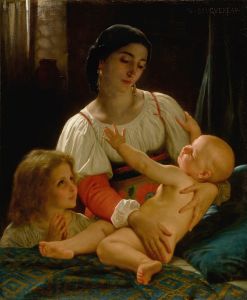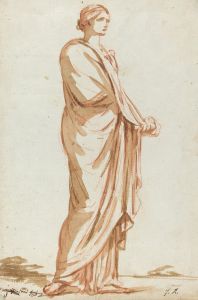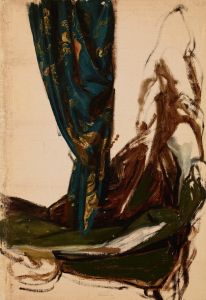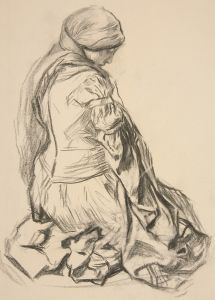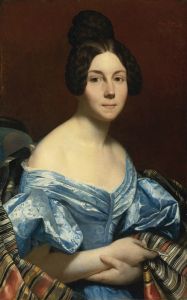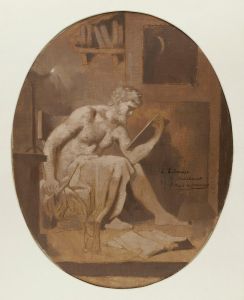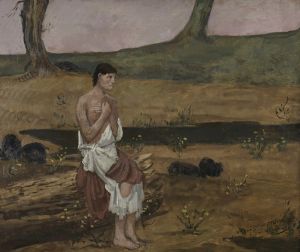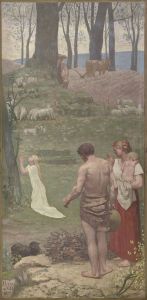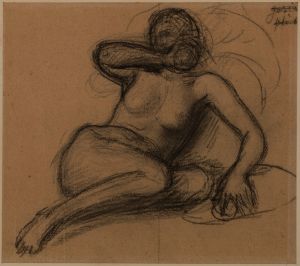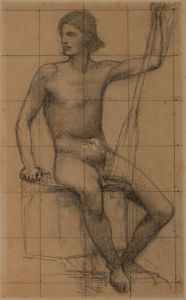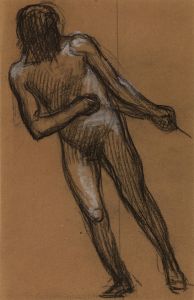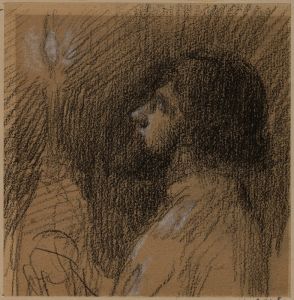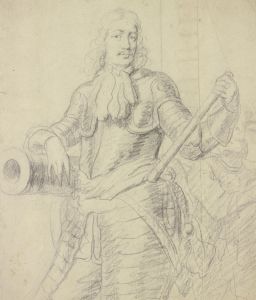
Femme nue, debout de face
A hand-painted replica of Pierre Puvis de Chavannes’s masterpiece Femme nue, debout de face, meticulously crafted by professional artists to capture the true essence of the original. Each piece is created with museum-quality canvas and rare mineral pigments, carefully painted by experienced artists with delicate brushstrokes and rich, layered colors to perfectly recreate the texture of the original artwork. Unlike machine-printed reproductions, this hand-painted version brings the painting to life, infused with the artist’s emotions and skill in every stroke. Whether for personal collection or home decoration, it instantly elevates the artistic atmosphere of any space.
Pierre Puvis de Chavannes, a prominent 19th-century French painter, is known for his contributions to the Symbolist movement and his distinctive style that often combined classical themes with a modern sensibility. One of his works, Femme nue, debout de face (translated as Nude Woman, Standing, Front View), exemplifies his approach to the human figure and his interest in timeless, idealized forms.
This artwork depicts a nude female figure standing upright, facing forward. The composition is simple and direct, focusing entirely on the subject without extraneous details or background distractions. The figure is rendered with a sense of calm and poise, characteristic of Puvis de Chavannes' work, which often sought to evoke a serene and contemplative mood. The artist's use of soft, muted tones and delicate modeling of the human form reflects his preference for subtlety and restraint over dramatic contrasts or excessive detail.
Puvis de Chavannes was celebrated for his ability to blend classical traditions with a modern aesthetic, and this piece is no exception. The figure's pose and proportions suggest an influence from classical sculpture, while the overall treatment of the subject aligns with the Symbolist movement's emphasis on evoking emotion and universal themes rather than focusing on realism or narrative. This approach made Puvis a significant figure in the transition from academic art to the more abstract and conceptual tendencies of modern art.
The exact date of creation for Femme nue, debout de face is not widely documented, but it is consistent with Puvis de Chavannes' broader body of work, which often explored themes of purity, harmony, and the idealized human form. The painting is believed to have been created as part of his studies or preparatory works, as Puvis frequently produced sketches and smaller compositions to refine his ideas for larger murals and paintings.
While Femme nue, debout de face may not be as well-known as some of Puvis de Chavannes' monumental works, such as his murals in the Panthéon in Paris, it remains an important example of his artistic philosophy and technique. The piece reflects his dedication to creating art that transcends specific time and place, aiming instead to capture a sense of universal beauty and tranquility.
As with many of Puvis de Chavannes' works, this painting has been studied for its influence on later artists, including the Post-Impressionists and early modernists, who admired his ability to distill complex ideas into simple, powerful imagery. Today, Femme nue, debout de face is appreciated as a testament to Puvis de Chavannes' skill and his role in shaping the trajectory of modern art.





